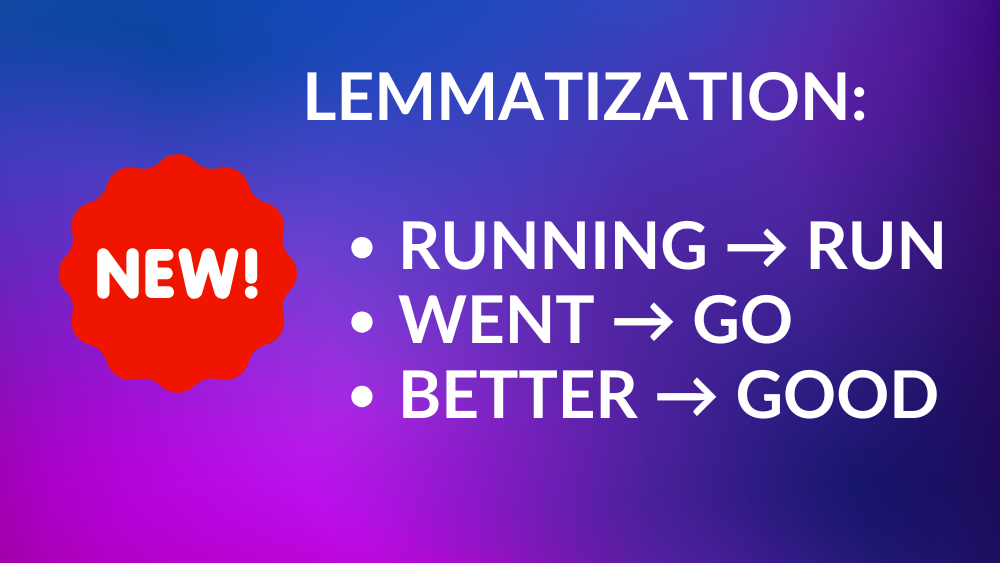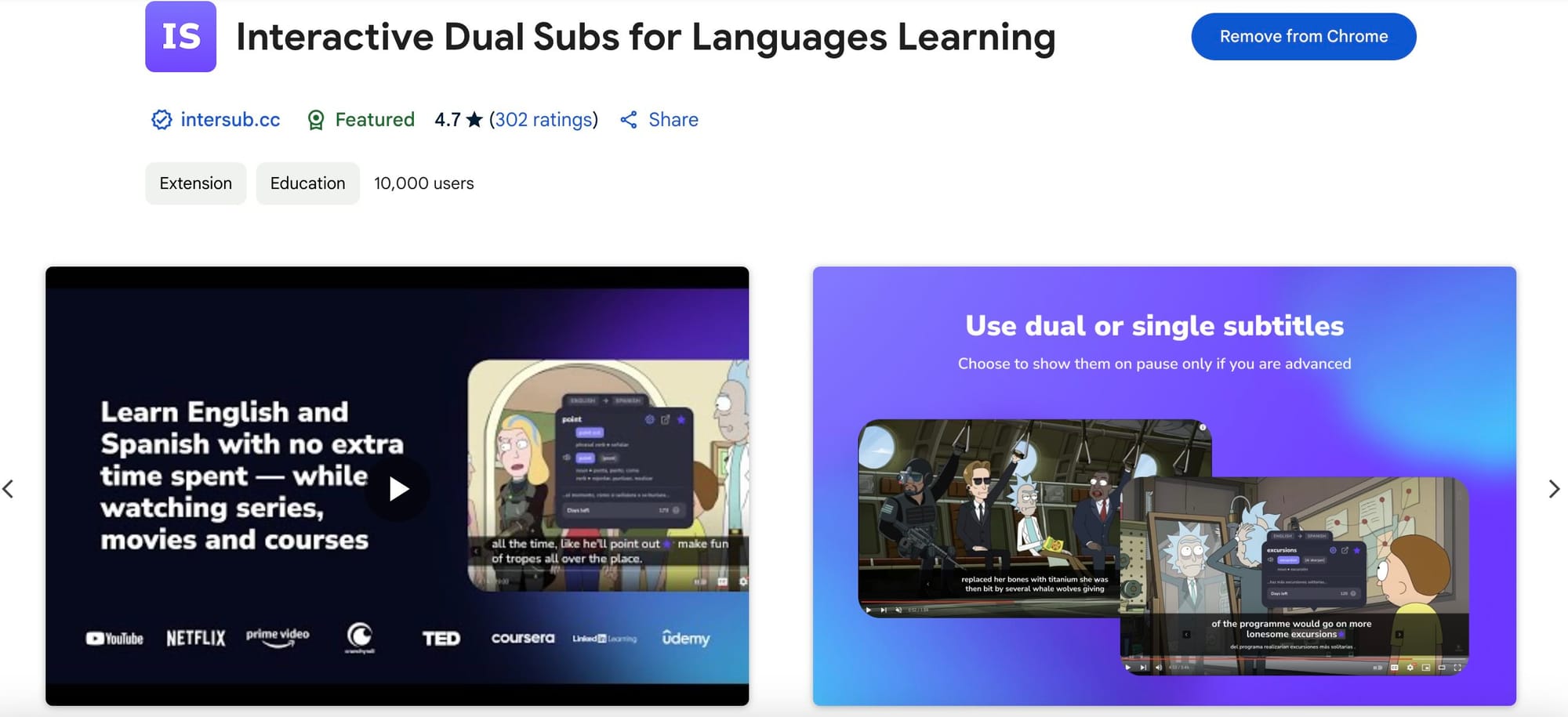Unlocking More Accurate Translations with NLP & Lemmatization
Our latest update enhances AI-powered dual subtitle translations through advanced NLP (Natural Language Processing) and lemmatization for 10+ languages.

Language learning just got a major upgrade! At InterSub, we’re always working on improving bilingual subtitle translation quality to provide the best learning experience. Our latest update enhances AI-powered dual subtitle translations through advanced NLP (Natural Language Processing) and lemmatization for 10+ languages, ensuring more precise and context-aware translations.
What Is Lemmatization, and Why Does It Matter?
Lemmatization reduces a word to its base or dictionary form. Many dictionaries prefer receiving words in their root form to provide more accurate definitions and multiple translation options. Here's an example of lemmatization:
- Running → Run
- Went → Go
- Better → Good
Without lemmatization, a translation system might treat running only as a verb in continuous tense or went as a standalone word instead of linking it to go. By using lemmatization, we ensure that users receive more complete and accurate dictionary definitions, covering verbs, adjectives, and other possible meanings in one go, and all of these while watching a movie on Netflix or learning a new skill on Coursera.
How NLP Enhances Translation Accuracy
NLP (Natural Language Processing) helps identify a word’s part of speech (POS) and its role in a sentence. This allows us to:
- Detect whether a word is a verb, noun, or adjective based on context.
- Improve phrase and idiom recognition (e.g., give up as a phrasal verb vs. give as a standalone verb).
- Deliver more contextually relevant translations by prioritizing the most probable meanings.
For example, consider the word running in two different sentences:
- She is running a business. → Verb (managing)
- He bought running shoes. → Adjective (related to running sport)
Without NLP, a dictionary might show only run (the action) as the primary translation, which could lead to incorrect translations or misunderstandings in context. Now, our system identifies the word’s role in the sentence and presents the most accurate translation at the top.
What’s New with InterSub’s NLP Upgrade?
- More Accurate Subtitle Translations – Higher-quality movie subtitle translations for 10+ languages based on real user demand.
- Smarter Dictionary Lookups – Users receive the most relevant word meanings first.
- Expanded Phrase Recognition – Better handling of phrasal verbs and idioms.
- Scalability for More Languages – Our new system makes it easier to add support for additional languages based on user needs.
What’s Next?
Right now, we’ve implemented these improvements for the 10 most popular languages on InterSub, determined based on user engagement data, including the most frequently translated and searched languages on our platform. However, this system allows us to quickly expand support to more languages in the future. We are also testing AI models like OpenAI to handle rare language cases, though cloud-based AI solutions may have speed limitations.
Try It Now & Experience a Smarter Way to Learn!
With this latest update, InterSub is making real-time Netflix subtitle translations even more accurate and customized to your learning needs. Start using it today and let us know what you think!
Key Features of InterSub
- Multi-Platform Compatibility: InterSub works seamlessly on 8 platforms, including Netflix, YouTube, Prime Video, Crunchyroll, Coursera, and Udemy. View the full list here.
- Bilingual Subtitles: Display dual subtitles—your native and target languages—at the same time to enhance comprehension and reinforce vocabulary recognition.
- Popup Dictionary: Easily translate new words with instant hover functionality, helping you understand in real-time without interrupting your streaming.
- Vocabulary Builder: Automatically save words you look up into your InterSub Wordbook, ready to sync with Anki for future practice.
- RTL Support: InterSub is fully optimized for right-to-left (RTL) languages like Arabic, Hebrew, and Urdu, ensuring smooth, readable subtitles for learners of these languages.
